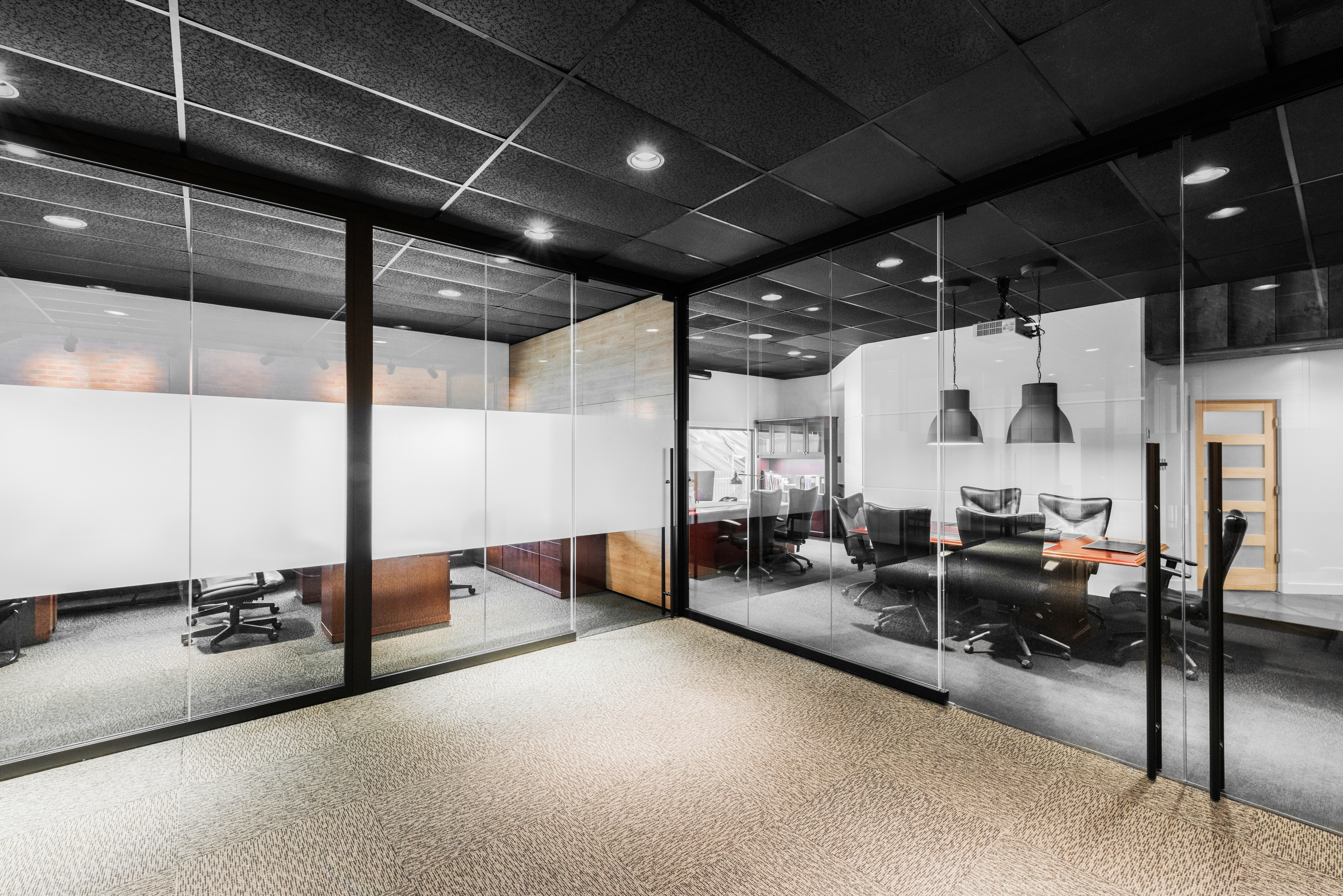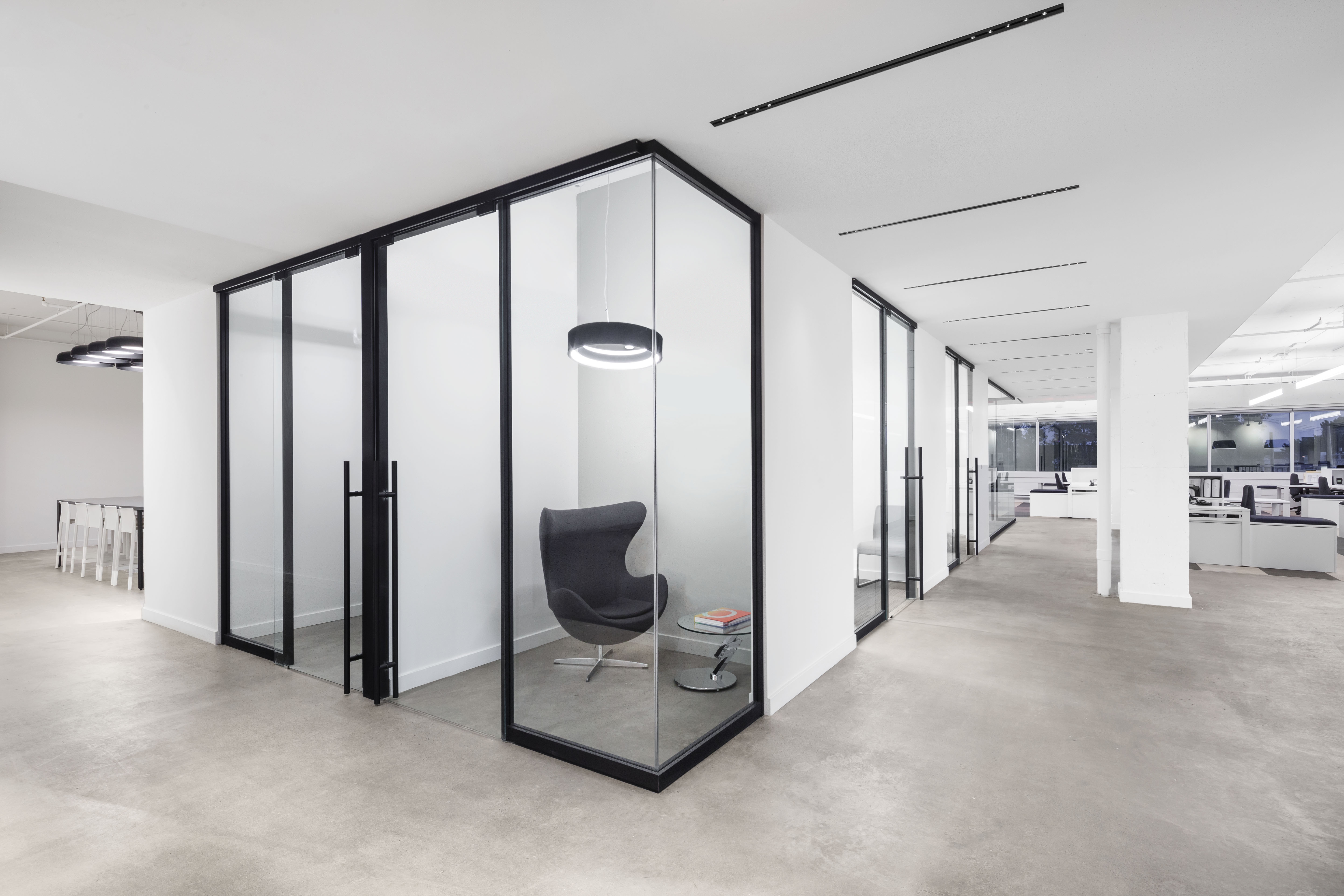How to Create Adaptable Designs with Interior Glass Walls
Karl Elhen
Oct 22, 2020 3:28:07 PM
Most people enjoy variety and choice, and many architectural clients are looking for the same in their office space designs. Office spaces can sometimes be hindered by rigid designs meant to encourage maximum productivity, but as those specifications seem to change year over year, adaptable and modular spaces have quickly become the architect’s must-have. More importantly, a need for maximizing natural light to supplement an old reliance on fluorescent lighting has positioned interior glass walls at the forefront of modern office design.
Although glass is typically seen as cold and inflexible, the expert architect can use this material to bring light and warmth into a space, and with certain hardware elements like floor and ceiling tracks used to anchor demountable walls, that same architect can create an adaptable space.
Learn the benefits of adaptable designs
Designing a physical space with materials that can be moved around (such as with modular wall systems or demountable glass walls) creates unique opportunities for clients who might want to change up their office aesthetic periodically.
Using movable glass walls or modular wall systems increases the flexibility of room design because the process to reconfigure the space is relatively quick and cost-effective—especially compared to traditional drywall. There is also the added benefit of clean demolition and install since there is no dust, plaster, or mess to contend with.

Although modular and movable walls have a higher sticker price than drywall, the cost can be offset by the unit’s flexibility. The savings come from disassembly and reconfiguration taking far less time and labour than demolishing and remodelling floor plans with permanent walls. Changing up a space with movable glass walls also requires a smaller team of installers rather than larger teams comprising multiple tradespeople, which reduces the human resources cost as well.
Use interior glass walls to design with natural light
Using interior glass walls is a great way to enhance a space without drawing the eye’s attention away from other design elements. The material’s transparency allows for spaces to appear large and open without sacrificing privacy as long as the glass panels are constructed with soundproofing elements.
Designing with glass also creates unique artistic opportunities with light. Allowing natural light to pass through partitions in a space creates a natural flow of warmth, movement, and life from room to room. In this way, an architect is not an engineer building a room using glass walls and doors, but an artist refracting light and colour to paint a three-dimensional canvas.
For example, coating treatments like the dichroic glass partitions mentioned in our recent blog post, change colour when viewed from different angles. These light changes that occur in real-time create visual interest in a space and can indicate what the uses are for the room, e.g. collective gathering places like boardrooms.
Use moveable glass walls and modular wall systems
Creating an adaptable space can be quite easy with the right technology and materials. At the top of that list: moveable or demountable walls. These architectural products are specifically designed to be detached from their ceiling and floor tracks so they can be remounted elsewhere. By definition, there is no easier or better way to create an adaptable space than by making the physical materials of the room adaptable and moveable.
There are two types of demountable walls: stick-built or unitized, and each wall type has its own strengths and weaknesses.
Stick-built wall systems provide the most flexibility for a space because individual pieces of the wall are highly customizable and can be configured based on the changing uses of the space.
For instance, a pane of plain glass could be swapped out for a panel with TV monitor or electrical connections or even for a pane of glass with typographical design elements like a company name or business motto.
As such, modular systems come with more parts and tend to take more time for assembly and require more on-site labour.
Unitized wall units have the advantage of being more quickly disassembled and installed as they tend to arrive on-site as singular, prefabricated units. What they lack in the customization options of their modular counterparts, they make up for in assembly and reconfiguration time.
Enhance tasteful aesthetics with functionality
Many great designs can lose their lustre as the passage of time and trends ages them. By striking a balance with the right materials and naturally adaptable technology, you can design beautiful, functional spaces with built-in flexibility that can evolve with the times.
Adaptable and tasteful, moodwall’s interior glass wall systems can frame and enhance virtually any modern design. Download the Architectural Walls Brochure to see our full range of adaptable wall and door systems and 10 unique design ideas.

